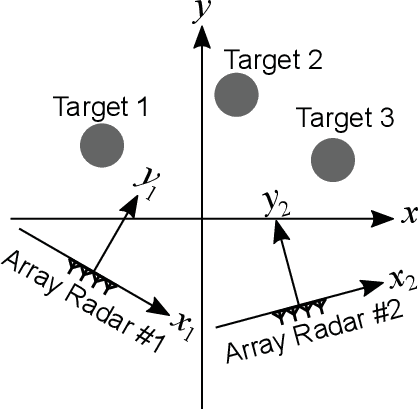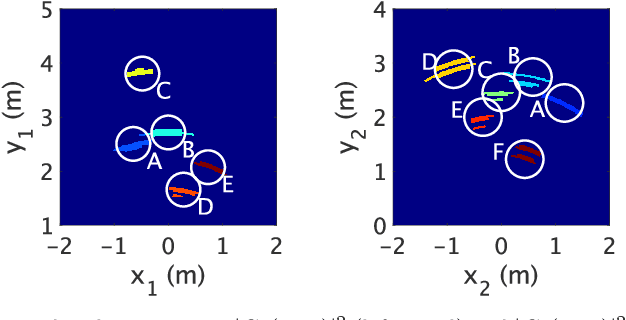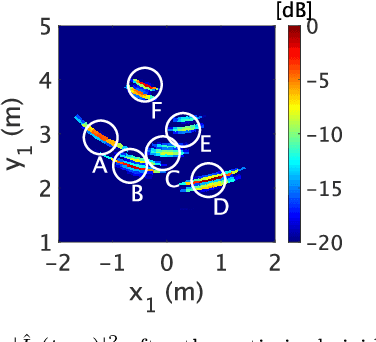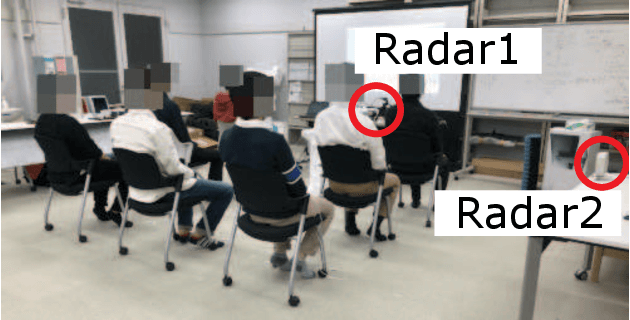Shunsuke Iwata
Radar-Based Estimation of Human Body Orientation Using Respiratory Features and Hierarchical Regression Model
Jul 18, 2023Abstract:This study proposes an accurate method to estimate human body orientation using a millimeter-wave radar system. Body displacement is measured from the phase of the radar echo, which is analyzed to obtain features associated with the fundamental and higher-order harmonic components of the quasi-periodic respiratory motion. These features are used in body-orientation estimation invoking a novel hierarchical regression model in which a logistic regression model is adopted in the first step to determine whether the target person is facing forwards or backwards; a pair of ridge regression models are employed in the second step to estimate body-orientation angle. To evaluate the performance of the proposed method, respiratory motions of five participants were recorded using three millimeter-wave radar systems; cross-validation was also performed. The average error in estimating body orientation angle was 38.3$^\circ$ and 23.1$^\circ$ using respectively a conventional method with only the fundamental frequency component and our proposed method, indicating an improvement in accuracy by factor 1.7 when using the proposed method. In addition, the coefficient of correlation between the actual and estimated body-orientation angles using the conventional and proposed methods are 0.74 and 0.91, respectively. These results show that by combining the characteristic features of the fundamental and higher-order harmonics from the respiratory motion, the proposed method offers better accuracy.
Multiradar Data Fusion for Respiratory Measurement of Multiple People
Jul 24, 2021



Abstract:This study proposes a data fusion method for multiradar systems to enable measurement of the respiration of multiple people located at arbitrary positions. Using the proposed method, the individual respiration rates of multiple people can be measured, even when echoes from some of these people cannot be received by one of the radar systems because of shadowing. In addition, the proposed method does not require information about the positions and orientations of the radar systems used because the method can estimate the layout of these radar systems by identifying multiple human targets that can be measured from different angles using multiple radar systems. When a single target person can be measured using multiple radar systems simultaneously, the proposed method selects an accurate signal from among the multiple signals based on the spectral characteristics. To verify the effectiveness of the proposed method, we performed experiments based on two scenarios with different layouts that involved seven participants and two radar systems. Through these experiments, the proposed method was demonstrated to be capable of measuring the respiration of all seven people by overcoming the shadowing issue. In the two scenarios, the average errors of the proposed method in estimating the respiration rates were 0.33 and 1.24 respirations per minute (rpm), respectively, thus demonstrating accurate and simultaneous respiratory measurements of multiple people using the multiradar system.
 Add to Chrome
Add to Chrome Add to Firefox
Add to Firefox Add to Edge
Add to Edge